Travel by Train to Superb Sakura Viewing Spots
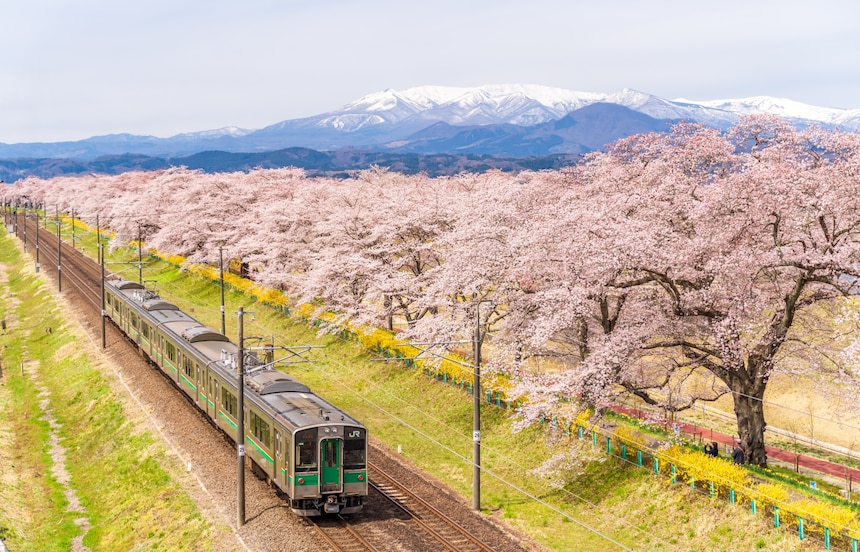
© PIXTA
A timeless symbol of Japan’s natural beauty, sakura cherry blossoms grace the country every spring, transforming what were drab winter landscapes into pink and white fairylands. Here are a few magnificent blossom-viewing spots in Japan’s eastern and northern regions, and tips on how to reach them on the nation’s excellent railroads.
How JR EAST PASS makes traveling to sakura spots convenient and reasonable.
Shiroishi Riverbank: A river runs through a thousand cherry trees
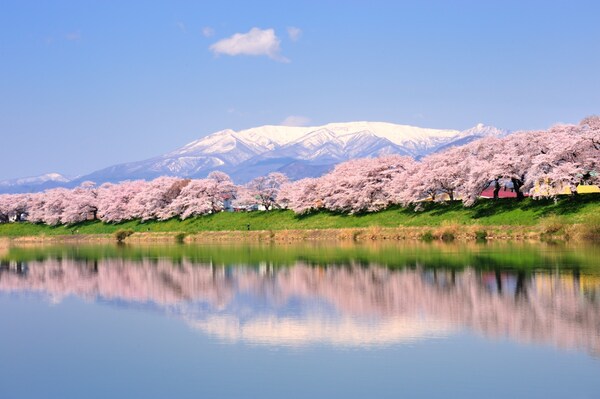
Where mountains meet rivers and cherry blossoms, the views are spectacular. The town of Shibata, Miyagi Prefecture, offers stunning scenes of the 1,200 cherry trees that flourish on the banks of the Shiroishi River, with the peaks of the Zao mountains in the distance. This unique sight is known as Hitome-senbon-zakura, or “One Thousand Cherry Trees at a Glance.”
The best way to enjoy the petals is a stroll along the 8-km stretch of trees on both banks of the river, followed by a visit to nearby Funaokajoshi Park. The park offers more great views of the pink-and-white landscape from a hill that was once topped by Funaoka Castle, and has a funicular that you can ride through a tunnel of cherry petals. The blossoms are usually at their best from early to mid-April during the Shibata Cherry Blossom Festival & Ogawara Cherry Blossom Festival; they are also illuminated at night.
The cherry trees are within walking distance from Funaoka Station, 30 minutes south of Sendai by train. Sendai is a major stop on the Tohoku Shinkansen Line. Other local attractions include several hot springs within a 30-minute car ride from Funaokajoshi Park.
The JR EAST PASS (Tohoku area) is recommended for travel to this cherry blossom-viewing spot.
Towada: Surrounded by blossoms and contemporary art
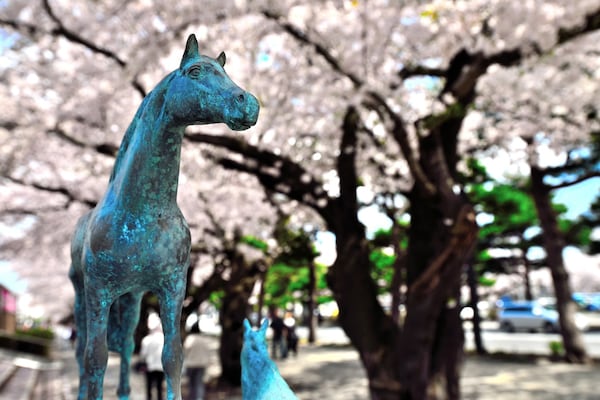
© PIXTA
For centuries, Japanese artists have drawn inspiration from cherry blossoms, extolling their beauty and brevity. In Towada City, Aomori Prefecture, you can enjoy both hanami and fine art on a cherry-lined road that comes alive with flowers and festivities.
Popularly known as Koma-kaido, Kanchogai-dori, or Government Office road, is a 36-meter-wide avenue that stretches 1.1 km through Towada’s administrative district. It boasts 156 cherry trees, 165 red pines and colorful flowerbeds, as well as many public art installations. The artworks include sculptures of horses, a nod to the region’s renowned horse breeders. It’s a perfect setting for both the Sakura Yabusame, a thrilling display of samurai mounted archery held under the blossoms in late April, as well as the Towada Art Center, a superlative contemporary art collection with works by artists such as Yayoi Kusama, Choi Jeong Hwa, and Ron Mueck.
A stroll under the sakura with a stop at the museum is the perfect way to enjoy this eye-popping stretch of petals. Towada can be reached via bus (40 minutes) from Hachinohe or Shichinohe-Towada stations on the JR Tohoku Shinkansen Line and is within easy reach of area attractions including Lake Towada, Matsumi Falls and Towada-Hachimantai National Park.
The JR EAST PASS (Tohoku area) is recommended for travel to this cherry blossom-viewing spot.
Tokamachi: Petals reflected in rice paddies
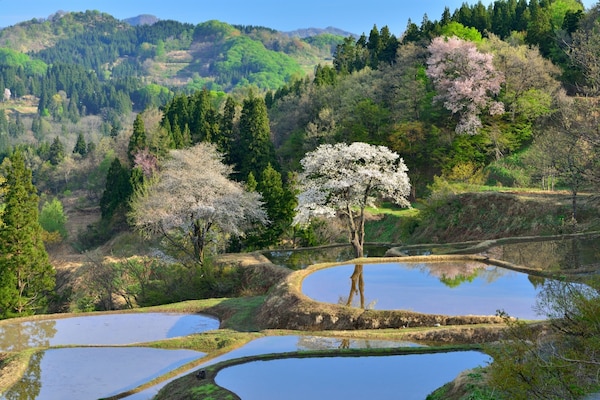
© PIXTA
There’s something magical in the sight of cherry blossoms reflected in water. One of the most beautiful spots in Japan to experience this is Tokamachi, Niigata Prefecture. This mountainous municipality near the Sea of Japan is famed for both its heavy snowfall and its picturesque rice paddy terraces, or tanada.
The Gimyo Rice Terraces are a small group of paddies near the ruins of Matsudai Castle that, irrigated with water, resemble a staircase of mirrors ascending the hills. Depending on the season, they may be covered with water, snow, or rice, but they are best from late April to early May, when the surrounding cherry trees are in bloom. Sometimes the petals mix with lingering snow, enhancing the fantasyland effect.
The Gimyo Rice Terraces are an 8-minute taxi ride from Matsudai Station on the Hokuhoku Line, via the Joetsu Shinkansen Line. Nearby attractions include Matsunoyama Onsen hot spring, Matsudai Family Ski Resort, and Matsudai Nohbutai, a cultural center and art museum right by Matsudai Station.
The JR EAST PASS (Nagano, Niigata area) is recommended for travel to this cherry blossom-viewing spot.
Matsumoto: A medieval fortress amongst the blossoms
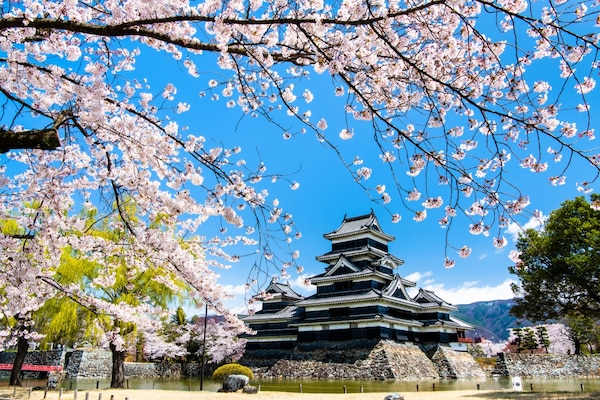
© PIXTA
Matsumoto Castle in Nagano Prefecture is one of the finest samurai fortresses in Japan. With its origins in the early 16th century, the current structure dates to the 1590s, making it Japan’s oldest existing five-tiered, six-story castle tower in the country. As one of only 12 surviving castles from Japan’s feudal period, Matsumoto Castle is a well-preserved National Treasure.
The spectacular fortress stands in a carp-filled moat ringed by cherry trees. In total there are some 300 sakura trees by the moat and in the castle’s inner grounds, making it the perfect spot to admire this architectural gem set off against both the cherry petals and, in the distance, the peaks of the Japan Alps. The castle tower is lit up nightly year-round, but the blossoms of the castle grounds are also dramatically illuminated for eight days starting three days after its administrators declare its cherry trees in bloom.
Matsumoto is within easy reach of Tokyo on Chuo Main Line trains, or via the Hokuriku Shinkansen Line. Aside from the castle, local attractions include Nawate Street and Matsumoto City Museum of Art.
The JR EAST PASS (Nagano, Niigata area) is recommended for travel to this cherry blossom-viewing spot.
Kumagaya: Cherry and rapeseed blooms pack a colorful punch
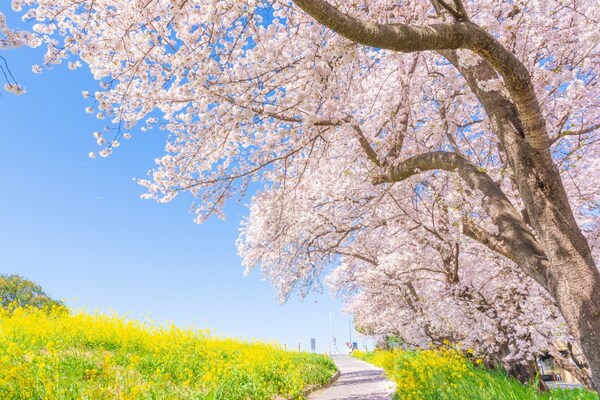
© PIXTA
When cherry blossoms bloom in tandem with bright yellow rapeseed flowers, they create a dazzling color combination. Rapeseed, or nanohana, is another symbol of spring and is featured in Japanese cuisine. Sakura and nanohana come alive from late March to early April at the Kumagaya Sakurazutsumi, Saitama Prefecture, an annual event that has been popular since the Edo period (1603–1867).
The Kumagaya Sakura Festival is held on the bank of the Arakawa River north of Tokyo, considered by many to be one of Japan’s 100 best sakura spots. It’s home to about 500 Somei-Yoshino cherry trees stretching approximately 2 kilometers along the river. The trees are also lit up at night, making an even more spectacular sight. The park is only a five-minute walk from Kumagaya Station on the Joetsu and Hokuriku Shinkansen lines as well as the Takasaki Line.
The JR EAST PASS (Tohoku area), JR EAST PASS (Nagano, Niigata area), and JR TOKYO Wide Pass are recommended for travel to this cherry blossom-viewing spot.
JR-EAST Rail Passes
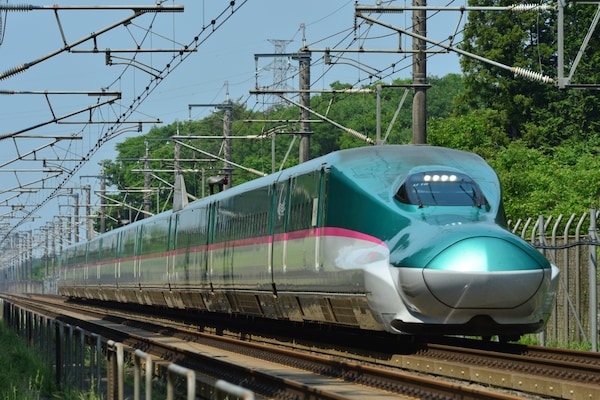
© JR-EAST
For convenience and value, East Japan Railway Company offers several passes that allow unlimited travel within certain areas. The JR TOKYO Wide Pass covers Tokyo and many surrounding prefectures, including the sakura-viewing spot of Kumagaya, for three days. The JR EAST PASS (Tohoku area) covers most of eastern Japan for five days, including the viewing spots of Towada and Shibata. And the JR EAST PASS (Nagano, Niigata area) covers a wide area stretching from Tokyo to the Sea of Japan for five days, including the Matsumoto Castle and Tokamachi spots, all explained in more detail above.
•The passes are available to anyone with a non-Japanese passport, including foreign residents of Japan.
•Please note that some of the events described above may be canceled to prevent the spread of coronavirus.



